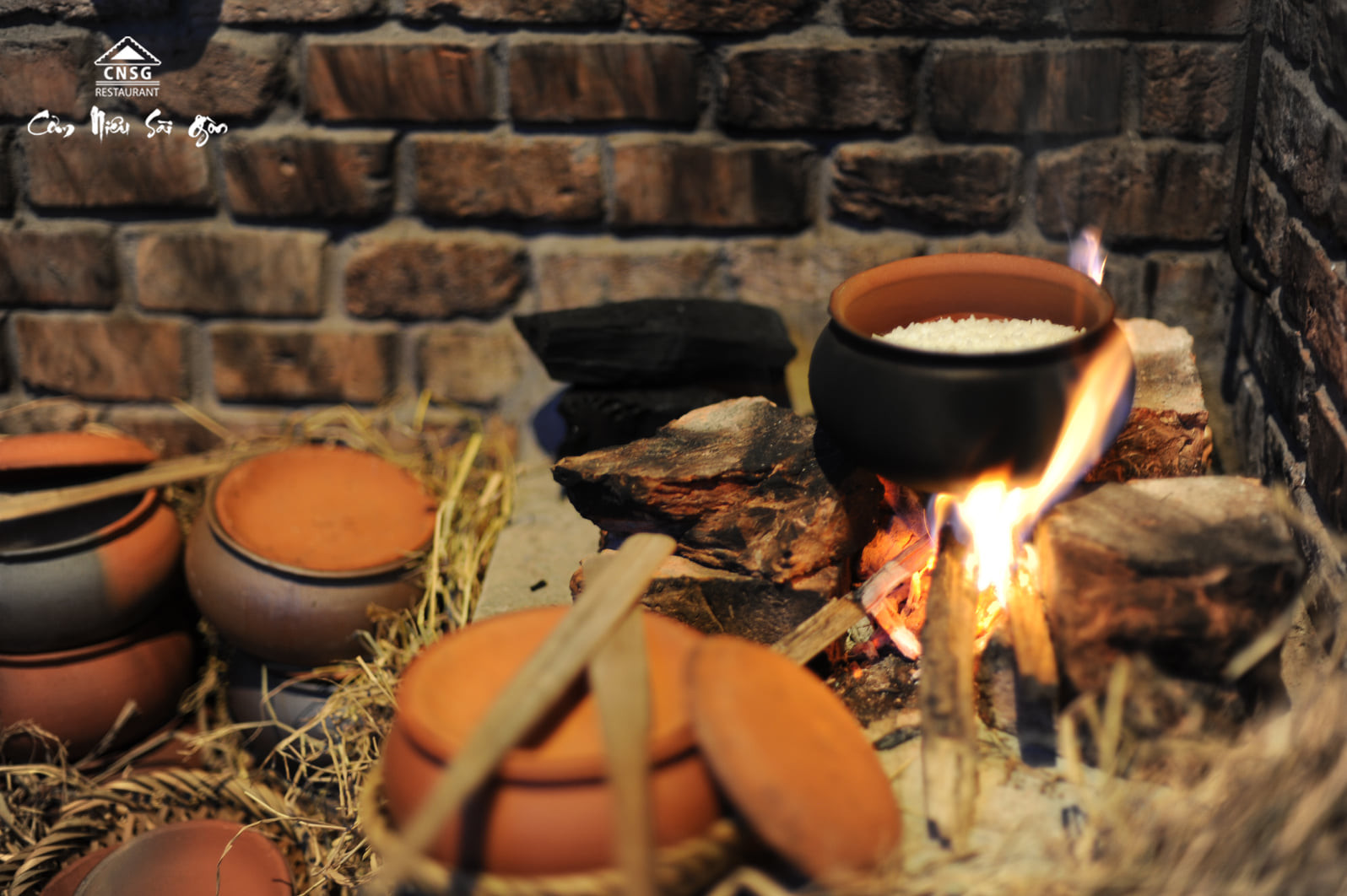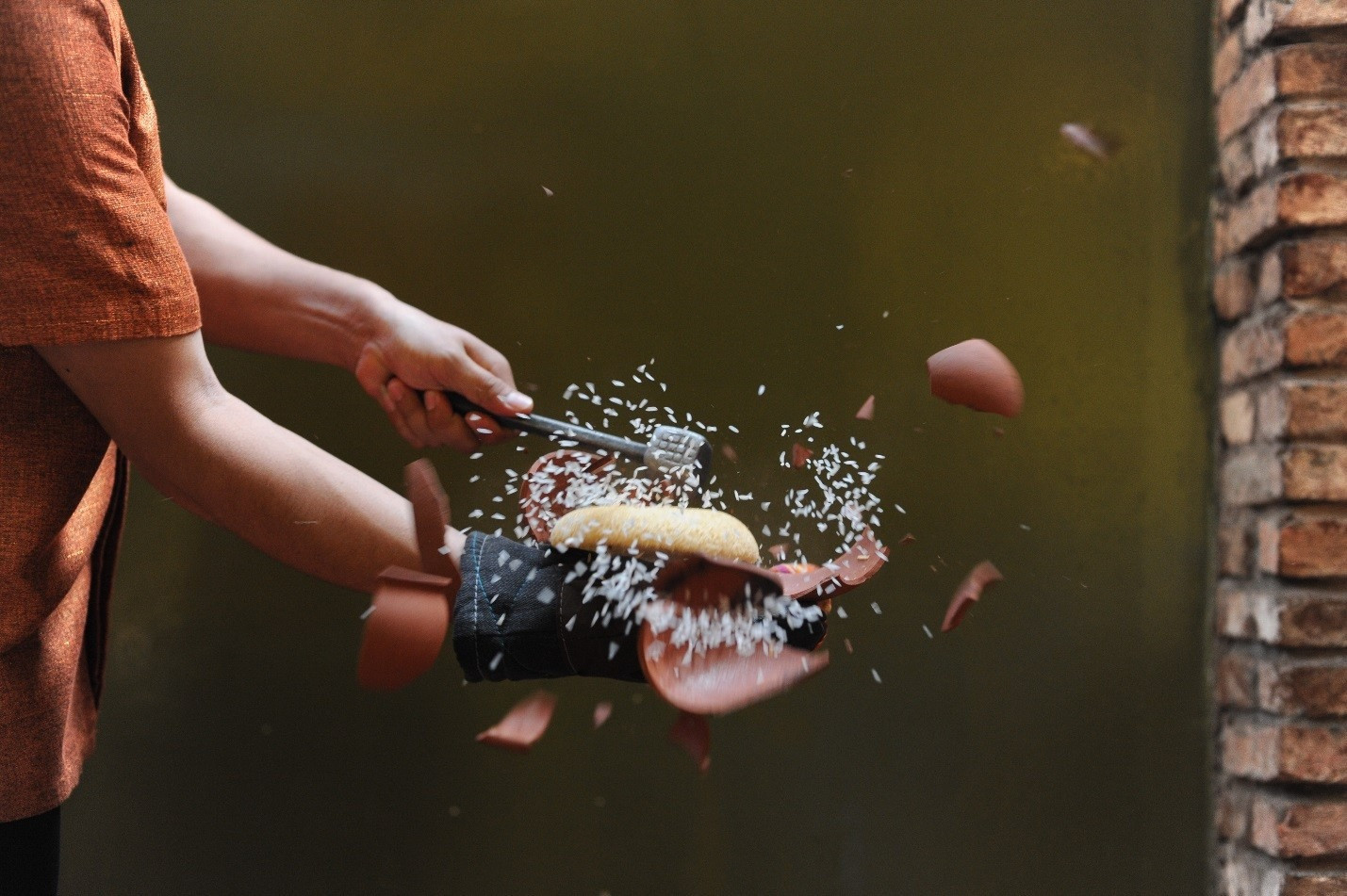
A video showing the ‘performance’ of breaking a pot and throwing rice by workers at a claypot rice restaurant in HCM City has attracted special attention from diners.
With quick and skillful movements, the rice "flew" from one place to another, creating a wonderful performance that delighted diners.
The com nieu, or claypot rice, is served at a restaurant famous for Vietnamese traditional dishes in HCM City.
Dung Phan, the manager of the restaurant, said the process of breaking pots to get burnt rice crust has been modified to create a humorous performance, creating a fun-packed atmosphere as well as helping remove pot crumbs stuck to the rice.
The ‘mouth’ of the pot is very small which makes it difficult to get the rice inside the pot, and breaking the pot is a must to collect the burnt rice.
“When breaking the pots, the crumbs of the pots often fall into the rice, so workers have to toss the rice so that the crumbs can be removed,” Dung said. “We have modified the process into an artistic performance which delights diners."
In order to have delicious claypot rice, cooks have to be very careful when implementing every stage of the cooking process, from rice selection and pot selection to cooking method.
The rice used is a special variety which needs to have stickiness and aroma. Clay pots must undergo a process of baking in deep fire, so that it is thin, but firm, and able to withstand high temperature without cracking.
The use of special clay pots helps increase the deliciousness of rice and keeps heat, allowing the rice to stay hot for a long time.
At the restaurant, claypot rice is cooked in a brick oven and cooks use heat and steam to ensure food safety, as well as cook as a lot of rice at the same time. It takes 45 minutes on average to cook a normal pot of rice, but 1-1.5 hours to cook a pot of rice for breaking, because it needs more time to create a crispy crust at the bottom of the pot.
A normal serving of claypot rice is VND30,000, while a serving of broken claypot rice is VND50,000.

Dung said the broken claypot rice is only done when diners place orders and ask for the performance. Most workers can perform the ‘flying claypot rice’.
“Sometimes we deliberately create funny situations during the performance. Sometimes, workers accidentally drop rice, which brings joy to diners,” she said.
“The rice falling to the ground will be collected to feed cattle, which avoids food waste,” she explained.
Kate Lyzgina, of Russian nationality, who now lives in Hanoi, said she likes broken claypot rice because she can both watch the wonderful performance and enjoy the delicious dish. Every time she goes to HCM City on business, she visits the claypot rice restaurant and orders the dish. She believes that the claypot rice is especially delicious if eaten together with ‘kho quet’ (Vietnamese caramelized pork dip for vegetables) and scallion oil.
Kate said that sometimes she receives friends and acquaintances from Russia to Vietnam and she always suggests claypot rice as a Vietnamese traditional specialty.
Thu Lan, 38, from the central business district 1 in HCM City, said she and her family often eat at the claypot rice restaurant on weekends.
“My kids always feel excited when watching the joyful performance at the restaurant and enjoying the delicious dish, but they can also decorate clay pots themselves and learn about traditional pottery making,” Lan said.
The broken claypot rice dish and the performance also introduces Vietnamese traditional culture, which has been attached to pottery craft villages for many years.
“In modern times, many claypot craft villages are facing difficulties as claypots have been replaced with electric cookers. However, by using clay pots and making broken claypot rice, we can support the artisans in craft villages, and improve their incomes so they can continue this traditional career,” Dung said.
Thao Trinh